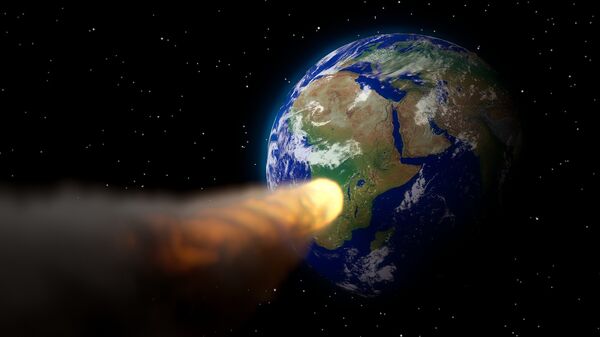An asteroid codenamed by NASA as 2019 HS2, barrelling through space at almost 27,000mp/h (43,450km/h) swung by at an overwhelmingly close distance from our planet early this morning, NASA’s asteroid trackers at the California-based Jet Propulsion Laboratory (JPL) revealed. The celestial body zipped past the Earth on an “Earth Close Approach” trajectory, coming closest to Earth at around 2:30 AM GMT on Saturday, but thankfully not in dangerous proximity to our planet.
Asteroids constitute one form of so-called “Near-Earth Objects” or NEOs, with the term suggesting that an object orbits the Sun at a distance of less than 120.8 million miles (194.5 million km). NASA earlier explained that NEOs may indeed approach close enough to Earth, although a “close” passage in astronomical terms is considerably different from what humans tend to understand by it.
For instance, Asteroid HS2, which has an orbit similar to Asteroid 2062 Aten, approached the Earth from a rough distance of 0.01310 astronomical units (au), which means HS2 made it as close to our planet as 1.2 million miles (1.96 million km), which is comparable to five times the distance from Earth to the Moon.
READ MORE: Japan Succeeds in Creating First Man-Made Crater on Asteroid
The body is estimated to measure from approximately 2.6ft to 98.4ft (13m to 30m) in diameter, with the upper borderline comparable in size to three London double-deckers, according to the Express, with the edition citing NASA as saying that despite the fact that an object of about 10m in diameter tend to be crushed in thermal explosions in the upper atmospheric layers, part of them “are known to cause property damage from time to time”.




